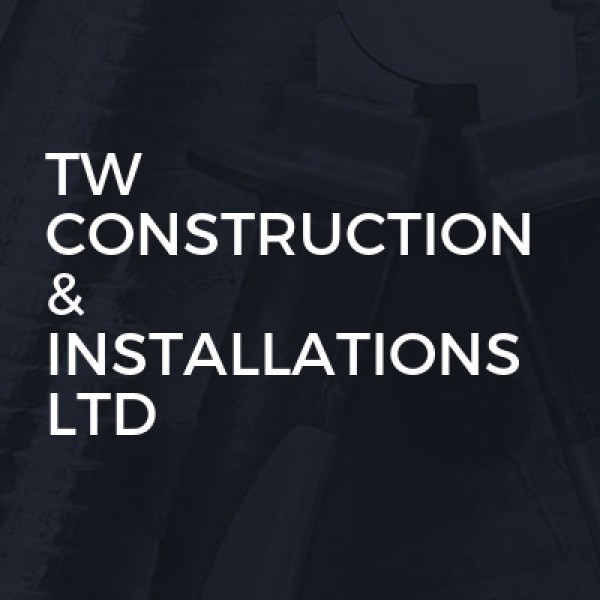Loft Conversions in Macclesfield
Welcome to General Interiors, your go-to experts for builders, extension builders, property maintenance, bathroom installation, and renov... read more »
Welcome to Edge Construction Services LTD, your premier choice for builders, extension builders, electricians, and property maintenance e... read more »
Welcome to MH Developments NW LTD, your trusted partner for all building and renovation needs in Woodhouse Park and throughout Greater Ma... read more »
RC Roofing And Property Repair Ltd is a distinguished tradespeople business nestled in the heart of The Valley, proudly... read more »
Welcome to G4 Builders, your go-to experts for all your building needs in Newall Green and the Greater Manchester area. Our team of skill... read more »
Tw Construction & Installations Ltd is a reputable and trusted business located in the heart of Denton, offering a compr... read more »
Welcome to Bond Developments, your trusted partner for all your construction needs in Backbower and the Greater Manchester area. As a pre... read more »
Next Gen Construction Ltd: Your Premier Tradespeople in Greater Manchester
Welcome to Next Gen Construction Ltd,... read more »
Welcome to Exquisite Manchester Ltd, your go-to solution for all tradespeople services in Congleton and throughout Cheshire. Wh... read more »
Welcome to Diamond Ridge Mcr Ltd, your trusted builders and renovation experts in Whalley Range, Greater Manchester. We are proud to offe... read more »
Welcome to Complete Carpentry and Construction Group Ltd, your go-to experts for all building and carpentry needs in Offerton Green and t... read more »
ASR Building Service UK Limited is a premier construction and renovation company based in the vibrant community of
Welcome to Kerikeri Ltd, your premier choice for building and renovation services in Hazel Grove and the Greater Manchester area. As a le... read more »
Welcome to Shirzad Builder, your premier choice for builders, extension builders, roofers, and loft conversion specialists in Levenshulme... read more »
Welcome to Araco Building Contractors Ltd, your trusted partner for all construction needs in Davenport and Greater Manchester.... read more »
Medhi Construction Ltd: Premier Tradespeople in Barlow Moor and Greater Manchester
Welcome to Medhi Construction... read more »
Welcome to MB Joinery Design Ltd, your premier choice for carpentry services in Haughton Green and across Greater Manchester. As seasoned... read more »
Welcome to Inline Joinery & Building Services, your t... read more »
Unibuild Plumbing And Building Ltd i... read more »
Acorn Design And Build Limited is yo... read more »
Search Loft Conversions in places nearby
Understanding Loft Conversions in Macclesfield
Loft conversions in Macclesfield have become increasingly popular as homeowners seek to maximise their living space without the hassle of moving. This charming Cheshire town, known for its picturesque landscapes and historic architecture, offers a unique opportunity for residents to enhance their homes. In this article, we'll delve into the various aspects of loft conversions, providing a comprehensive guide for those considering this home improvement project.
The Benefits of Loft Conversions
Loft conversions offer numerous advantages, making them an attractive option for many homeowners. Firstly, they provide additional living space, which can be used for a variety of purposes such as a bedroom, home office, or playroom. This extra space can significantly increase the value of your property, making it a wise investment.
Moreover, loft conversions are often more cost-effective than traditional extensions, as they utilise existing space within the home. They also tend to be less disruptive, allowing you to continue living in your home during the renovation process. Additionally, converting your loft can improve the energy efficiency of your home by enhancing insulation.
Types of Loft Conversions
There are several types of loft conversions to consider, each with its own set of benefits and considerations. The most common types include:
- Velux Loft Conversion: This is the simplest and most cost-effective type, involving the installation of Velux windows to provide natural light. It requires minimal structural alterations, making it ideal for lofts with sufficient headroom.
- Dormer Loft Conversion: This involves extending the existing roof to create additional floor space and headroom. Dormer conversions are versatile and can be adapted to suit various property styles.
- Hip to Gable Loft Conversion: Suitable for properties with a hipped roof, this conversion involves extending the gable wall to create more space. It's a popular choice for semi-detached and detached homes.
- Mansard Loft Conversion: This type involves altering the roof structure to create a flat roof with a steep rear slope. Mansard conversions offer the most space but are also the most complex and costly.
Planning Permission and Building Regulations
Before embarking on a loft conversion in Macclesfield, it's essential to understand the planning permission and building regulations involved. In many cases, loft conversions fall under permitted development rights, meaning you won't need planning permission. However, there are exceptions, particularly if your property is in a conservation area or if the conversion significantly alters the roof's appearance.
Regardless of planning permission, all loft conversions must comply with building regulations. These regulations ensure the safety and structural integrity of the conversion, covering aspects such as fire safety, insulation, and staircase design. It's advisable to consult with a professional architect or builder to ensure compliance.
Choosing the Right Contractor
Selecting the right contractor is crucial to the success of your loft conversion project. Look for a contractor with experience in loft conversions, particularly in the Macclesfield area. They should have a proven track record of delivering quality work on time and within budget.
It's wise to obtain multiple quotes and check references before making a decision. Additionally, ensure the contractor is fully insured and offers a warranty on their work. A reputable contractor will be happy to provide this information and answer any questions you may have.
Design Considerations for Loft Conversions
Designing your loft conversion is an exciting part of the process, allowing you to create a space that meets your needs and reflects your personal style. Consider the purpose of the room and how it will be used. For example, a bedroom may require built-in storage solutions, while a home office might benefit from ample natural light and electrical outlets.
Think about the layout and how to make the most of the available space. Clever design solutions, such as bespoke furniture and multi-functional pieces, can help maximise the usability of the room. Don't forget to consider lighting, both natural and artificial, to create a welcoming and functional environment.
Cost of Loft Conversions in Macclesfield
The cost of a loft conversion in Macclesfield can vary significantly depending on the type of conversion, the size of the space, and the materials used. On average, a basic Velux conversion might cost between £20,000 and £30,000, while a more complex Mansard conversion could exceed £50,000.
It's important to budget for additional expenses such as planning fees, building regulation approval, and any unforeseen costs that may arise during the project. Obtaining detailed quotes from contractors and setting aside a contingency fund can help manage these costs effectively.
Financing Your Loft Conversion
Financing a loft conversion can be a significant consideration for many homeowners. There are several options available, including personal savings, home improvement loans, or remortgaging your property. Each option has its pros and cons, so it's important to carefully evaluate your financial situation and choose the best solution for your needs.
Consulting with a financial advisor can provide valuable insights and help you make an informed decision. Additionally, some contractors may offer financing options or payment plans, which can make the project more affordable.
Maximising Space in Your Loft Conversion
Maximising space is a key consideration in any loft conversion. Clever design solutions can help you make the most of the available area, creating a functional and comfortable living space. Consider incorporating built-in storage solutions, such as wardrobes or shelving, to keep the room organised and clutter-free.
Utilising multi-functional furniture, such as a sofa bed or a desk that doubles as a dressing table, can also enhance the usability of the space. Additionally, choosing a neutral colour palette and strategically placing mirrors can create the illusion of a larger, more open area.
Insulation and Energy Efficiency
Insulation is a crucial aspect of any loft conversion, ensuring the space is comfortable and energy-efficient. Proper insulation can help regulate the temperature, keeping the room warm in winter and cool in summer. It can also reduce energy bills by minimising heat loss.
There are several insulation options available, including fibreglass, foam, and natural materials such as sheep's wool. Each has its benefits and considerations, so it's important to choose the right solution for your needs. Consulting with a professional can help you make an informed decision.
Lighting Solutions for Loft Conversions
Lighting plays a vital role in creating a welcoming and functional loft conversion. Natural light is always preferable, so consider installing large windows or skylights to maximise daylight. This not only enhances the aesthetic appeal of the space but also reduces the need for artificial lighting during the day.
For artificial lighting, consider a combination of ambient, task, and accent lighting to create a well-lit and versatile environment. Dimmer switches can provide flexibility, allowing you to adjust the lighting to suit different activities and moods.
Addressing Common Challenges
Loft conversions can present several challenges, but with careful planning and expert guidance, these can be effectively addressed. One common issue is limited headroom, which can be resolved by choosing the right type of conversion or incorporating design solutions such as lowered ceilings in other parts of the house.
Access can also be a challenge, particularly in older properties with narrow staircases. Installing a spiral staircase or a space-saving staircase can provide a practical solution. Additionally, ensuring adequate ventilation is essential to prevent condensation and maintain a healthy living environment.
Legal and Safety Considerations
Ensuring your loft conversion complies with legal and safety requirements is paramount. Building regulations cover various aspects, including structural integrity, fire safety, and sound insulation. It's essential to work with a qualified professional to ensure all requirements are met.
Fire safety is a critical consideration, particularly in loft conversions. Installing smoke alarms, fire-resistant materials, and ensuring a safe means of escape are all essential components of a compliant conversion.
Maintaining Your Loft Conversion
Once your loft conversion is complete, regular maintenance is essential to ensure it remains in good condition. This includes checking for signs of wear and tear, such as leaks or cracks, and addressing any issues promptly.
Regular cleaning and upkeep of fixtures and fittings will also help maintain the appearance and functionality of the space. Additionally, consider periodic inspections by a professional to ensure the structural integrity and safety of the conversion.
Frequently Asked Questions
- Do I need planning permission for a loft conversion in Macclesfield? In many cases, loft conversions fall under permitted development rights, but it's essential to check with your local authority.
- How long does a loft conversion take? The duration can vary depending on the complexity of the project, but most conversions take between 6 to 12 weeks.
- Can all lofts be converted? Not all lofts are suitable for conversion. Factors such as headroom, roof structure, and access must be considered.
- Will a loft conversion add value to my home? Yes, a well-executed loft conversion can significantly increase the value of your property.
- What is the best type of loft conversion? The best type depends on your specific needs, budget, and the existing structure of your home.
- How can I ensure my loft conversion is energy efficient? Proper insulation and energy-efficient windows are key to creating an energy-efficient loft conversion.
Loft conversions in Macclesfield offer a fantastic opportunity to enhance your home, providing additional space and increasing property value. By understanding the various aspects of the process, from planning and design to construction and maintenance, you can ensure a successful and rewarding project.
Send a message





















